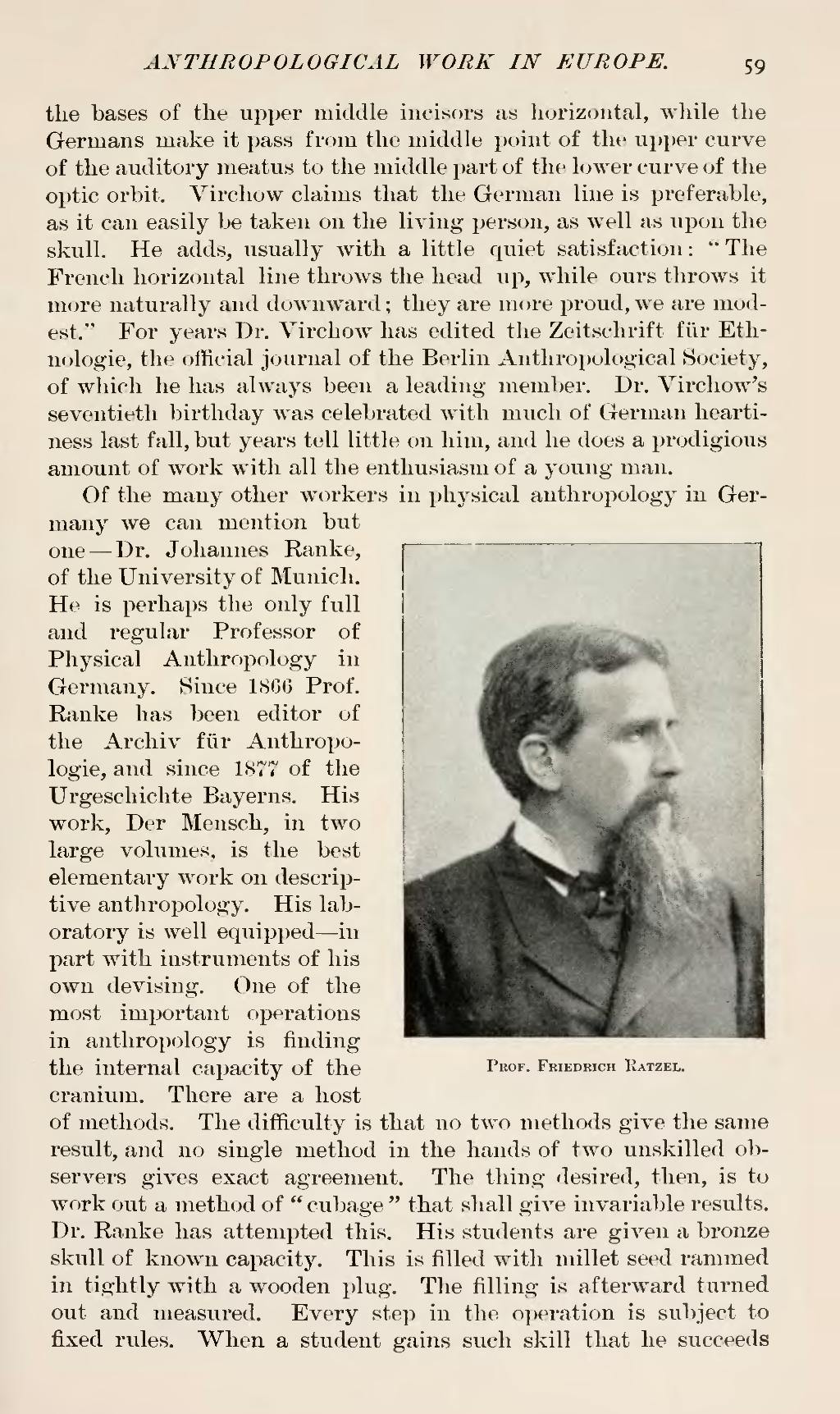the bases of the upper middle incisors as horizontal, while the Germans make it pass from the middle point of the upper curve of the auditory meatus to the middle part of the lower curve of the optic orbit. Virchow claims that the German line is preferable, as it can easily be taken on the living person, as well as upon the skull. He adds, usually with a little quiet satisfaction: "The French horizontal line throws the head up, while ours throws it more naturally and downward; they are more proud, we are modest." For years Dr. Virchow has edited the Zeitschrift für Ethnologie, the official journal of the Berlin Anthropological Society, of which he has always been a leading member. Dr. Virchow's seventieth birthday was celebrated with much of German heartiness last fall, but years tell little on him, and he does a prodigious amount of work with all the enthusiasm of a young man.
Of the many other workers in physical anthropology in Germany  Prof. Friedrich Ratzel. we can mention but one—Dr. Johannes Ranke, of the University of Munich. He is perhaps the only full and regular Professor of Physical Anthropology in Germany. Since 1866 Prof. Ranke has been editor of the Archiv für Anthropologic, and since 1877 of the Urgeschichte Bayerns. His work, Der Mensch, in two large volumes, is the best elementary work on descriptive anthropology. His laboratory is well equipped in part with instruments of his own devising. One of the most important operations in anthropology is finding the internal capacity of the cranium. There are a host of methods. The difficulty is that no two methods give the same result, and no single method in the hands of two unskilled observers gives exact agreement. The thing desired, then, is to work out a method of "cubage" that shall give invariable results. Dr. Ranke has attempted this. His students are given a bronze skull of known capacity. This is filled with millet seed rammed in tightly with a wooden plug. The filling is afterward turned out and measured. Every step in the operation is subject to fixed rules. When a student gains such skill that he succeeds
Prof. Friedrich Ratzel. we can mention but one—Dr. Johannes Ranke, of the University of Munich. He is perhaps the only full and regular Professor of Physical Anthropology in Germany. Since 1866 Prof. Ranke has been editor of the Archiv für Anthropologic, and since 1877 of the Urgeschichte Bayerns. His work, Der Mensch, in two large volumes, is the best elementary work on descriptive anthropology. His laboratory is well equipped in part with instruments of his own devising. One of the most important operations in anthropology is finding the internal capacity of the cranium. There are a host of methods. The difficulty is that no two methods give the same result, and no single method in the hands of two unskilled observers gives exact agreement. The thing desired, then, is to work out a method of "cubage" that shall give invariable results. Dr. Ranke has attempted this. His students are given a bronze skull of known capacity. This is filled with millet seed rammed in tightly with a wooden plug. The filling is afterward turned out and measured. Every step in the operation is subject to fixed rules. When a student gains such skill that he succeeds
